Chapter 18 Artifacts and Pitfalls Christopher J. Gallagher and Gian Paparcuri When you are in the OR, you are forever asking yourself, “Is it real, or is it Memorex?”. We get seduced by the great images, and you have to shake yourself and say, “This is not a REAL LIVE picture, this is an ULTRASOUND CREATION OF A PICTURE, and ultrasound can fool you”. Artifacts change their appearance and appear or disappear depending on the view. Real structures will remain constant and can be seen in multiple views. (See also CFD artifacts, pitfalls, and masses.) Acoustic imaging assumptions (to assign the location and intensity of received echoes): US beam exits transducer as a complex 3-D bowtie shape (below figure) with additional off-axis low-energy beams (side lobes and grating lobes). Strong reflector (highly reflective object) located outside the main US beam (peripheral field) may generate detectable echoes that will be displayed as having originated from within the main beam. Misplaced echoes overlapping anechoic structure. Adjust focal zone to the level of interest and place transducer at the center of the object of interest. Beam width: distal beam (widened beam) widens beyond the actual transducer width (below figures). If the beam is oscillating rapidly, the multiple artifactual echos produced by the side lobes are displayed as a curved line at the same level as the true object. Options: reduce power (below figures).
 Inconsistencies due to violations of the acoustic imaging assumptions, equipment malfunction, ultrasound physics (physical limitations of the modality), operator error (improper scanning techniques), interpretation error.
Inconsistencies due to violations of the acoustic imaging assumptions, equipment malfunction, ultrasound physics (physical limitations of the modality), operator error (improper scanning techniques), interpretation error.
 Interfere with image interpretation.
Interfere with image interpretation.
 Reflections not representing true anatomy.
Reflections not representing true anatomy.
 Part of an image will not represent the anatomic structure (reality) accurately
Part of an image will not represent the anatomic structure (reality) accurately
 Reflections arise only from structures along the beam’s main axis. Echoes detected originated from within the main ultrasound beam. Problem: side lobes, grating lobes.
Reflections arise only from structures along the beam’s main axis. Echoes detected originated from within the main ultrasound beam. Problem: side lobes, grating lobes.
 Sound travels directly to a reflector and back (straight line). Problem: refraction.
Sound travels directly to a reflector and back (straight line). Problem: refraction.
 Echo returns to transducer after a single reflection. Problem: mirror images, reverberations.
Echo returns to transducer after a single reflection. Problem: mirror images, reverberations.
 Sound (sound beam and its echo) travels in a straight line.
Sound (sound beam and its echo) travels in a straight line.
 Sound travels exactly at 1540 m/sec (constant, average speed → time is distance). Problem: when the propagation speed errors occurs, reflectors are placed in improper positions or at incorrect depth (time is not equal to distance).
Sound travels exactly at 1540 m/sec (constant, average speed → time is distance). Problem: when the propagation speed errors occurs, reflectors are placed in improper positions or at incorrect depth (time is not equal to distance).
 The depth of an object is directly related to the amount of time for an ultrasound pulse to return to the transducer as an echo (round trip). The length of time for a single round trip of an echo is related only to the distance traveled by the echo.
The depth of an object is directly related to the amount of time for an ultrasound pulse to return to the transducer as an echo (round trip). The length of time for a single round trip of an echo is related only to the distance traveled by the echo.
 Reflection’s intensity (strength) is related to tissue characteristics. Problem: attenuation.
Reflection’s intensity (strength) is related to tissue characteristics. Problem: attenuation.
 Imaging plane is extremely thin. Problem: ultrasound beam has some thickness in the perpendicular beam plane, reflections from structures above or below a target reflector may be placed with the target reflector on the display screen.
Imaging plane is extremely thin. Problem: ultrasound beam has some thickness in the perpendicular beam plane, reflections from structures above or below a target reflector may be placed with the target reflector on the display screen.
 Acoustic energy in an ultrasound field is uniformly attenuated.
Acoustic energy in an ultrasound field is uniformly attenuated.
Artifacts
 Artifacts associated with US beam characteristics (beam width, side lobe, grating lobe, edge shadow).
Artifacts associated with US beam characteristics (beam width, side lobe, grating lobe, edge shadow).
 Artifacts associated with multiple echoes (reverberations, comet tail artifact, ring down artifacts, mirror image artifact).
Artifacts associated with multiple echoes (reverberations, comet tail artifact, ring down artifacts, mirror image artifact).
 Artifacts associated with velocity errors (speed displacement artifact, refraction, refraction artifact).
Artifacts associated with velocity errors (speed displacement artifact, refraction, refraction artifact).
Artifacts Associated with US Beam Characteristics
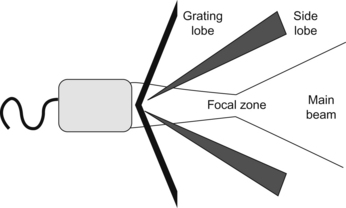
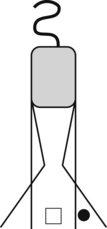
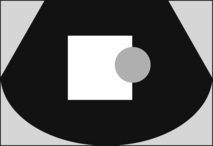
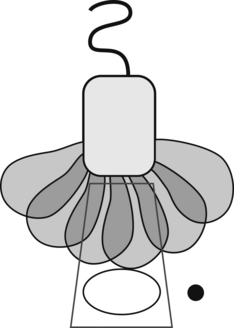
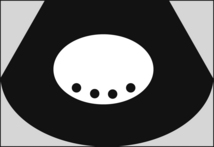
Artifacts and Pitfalls








